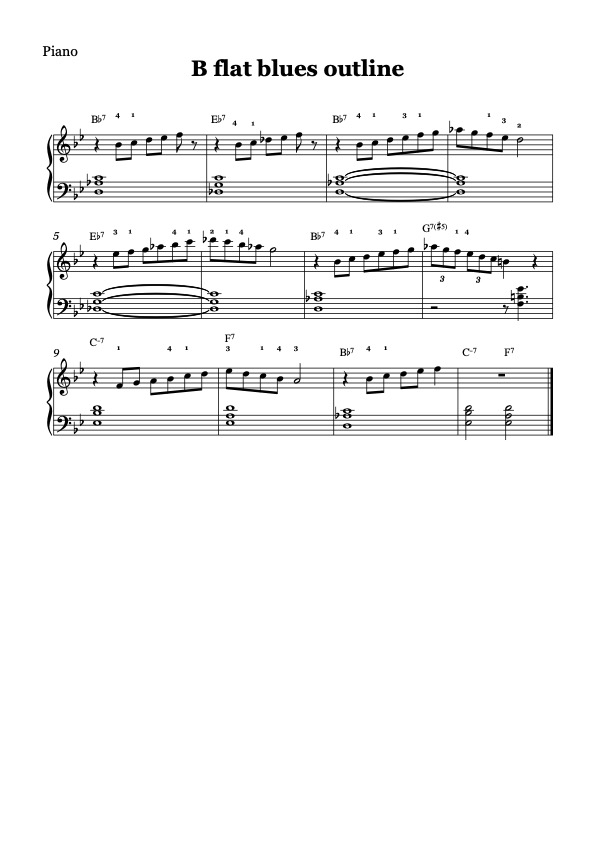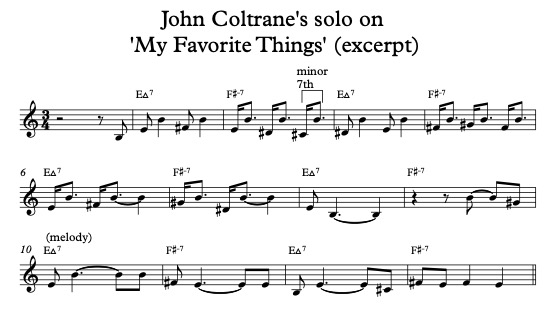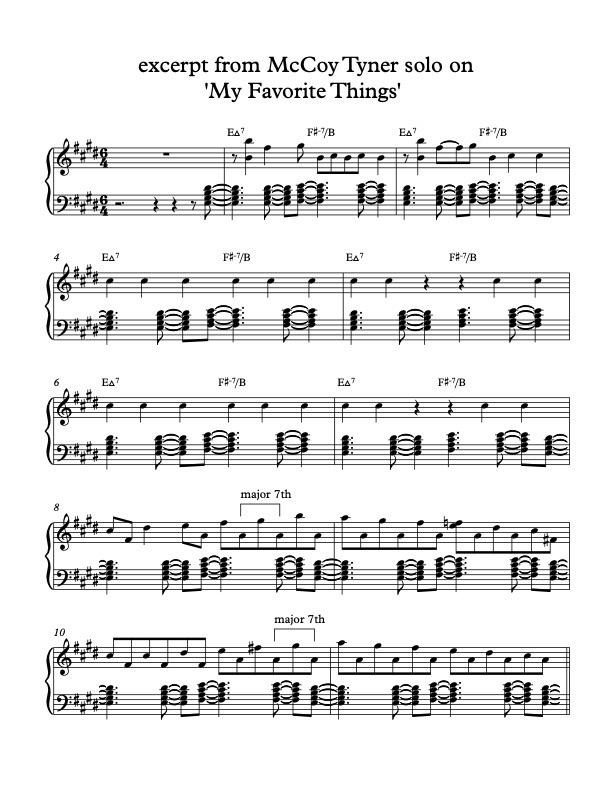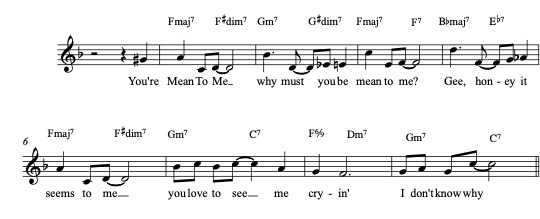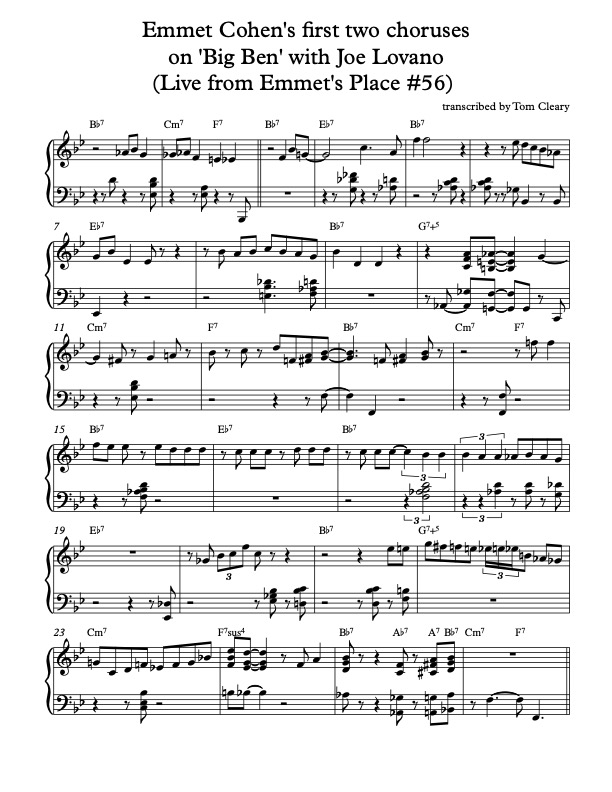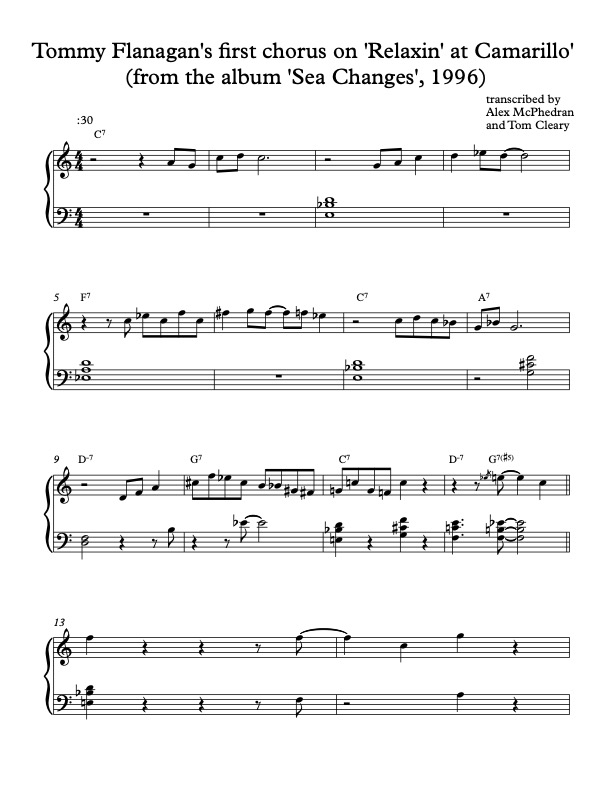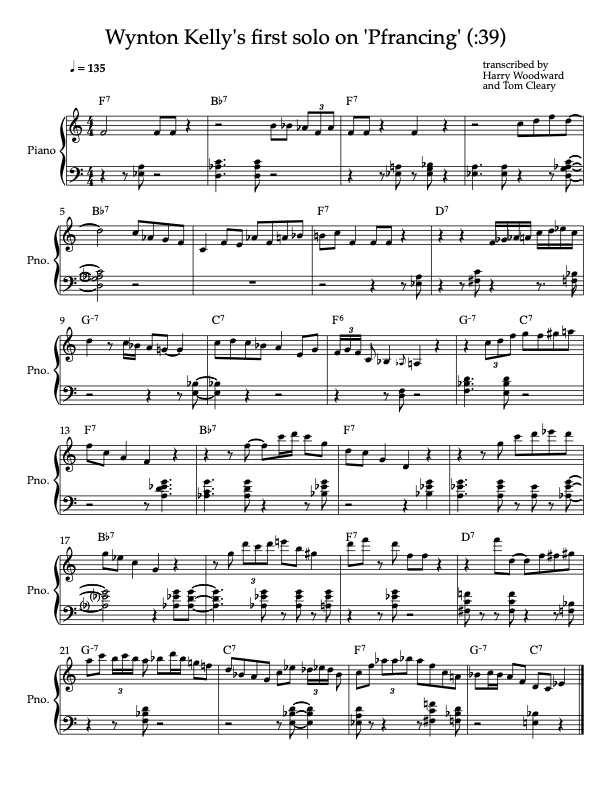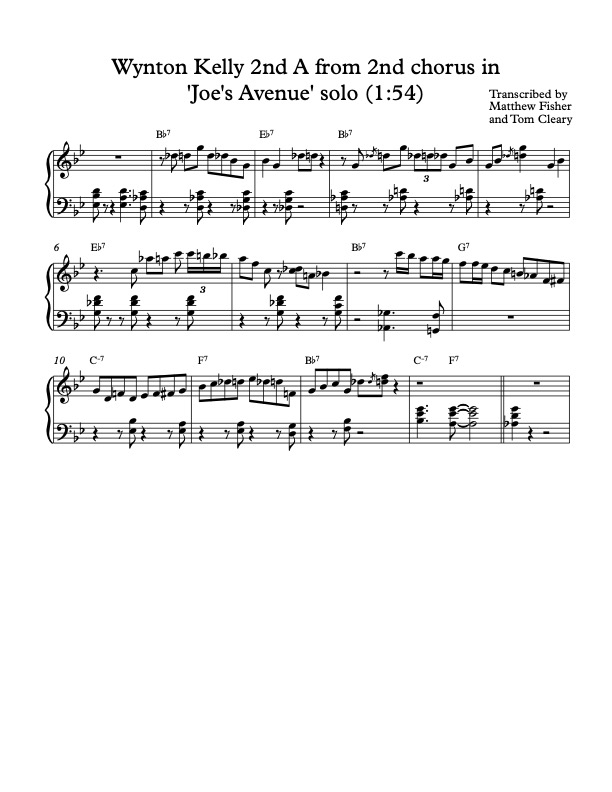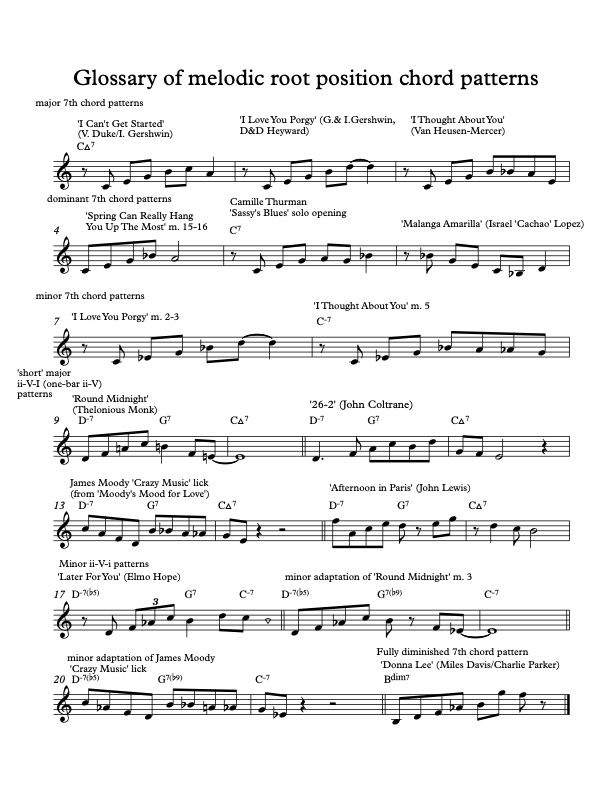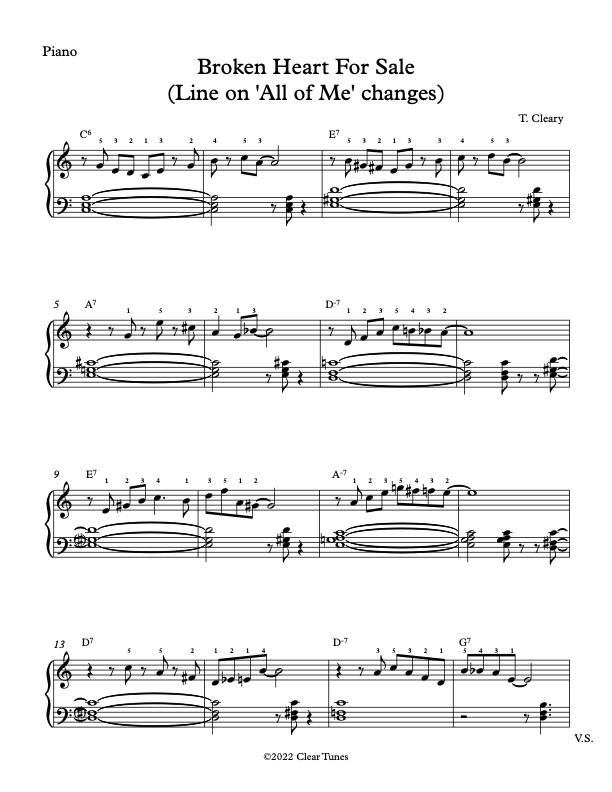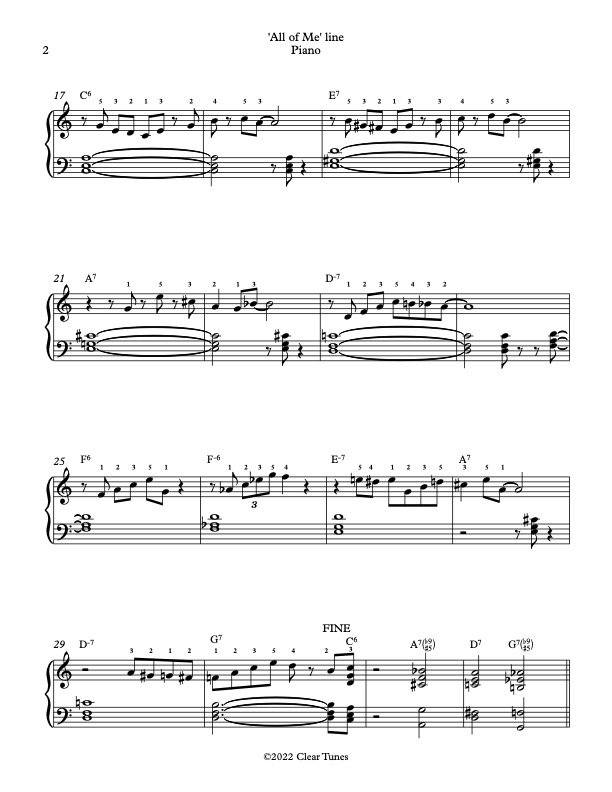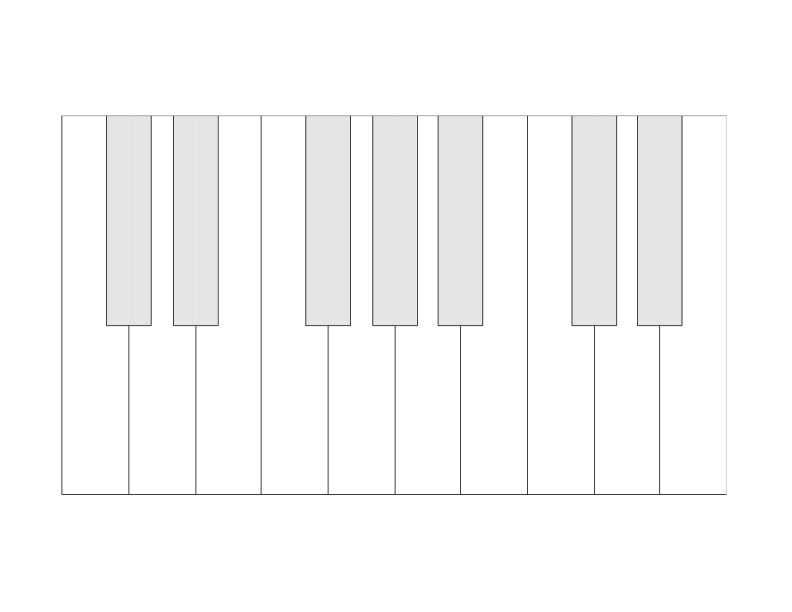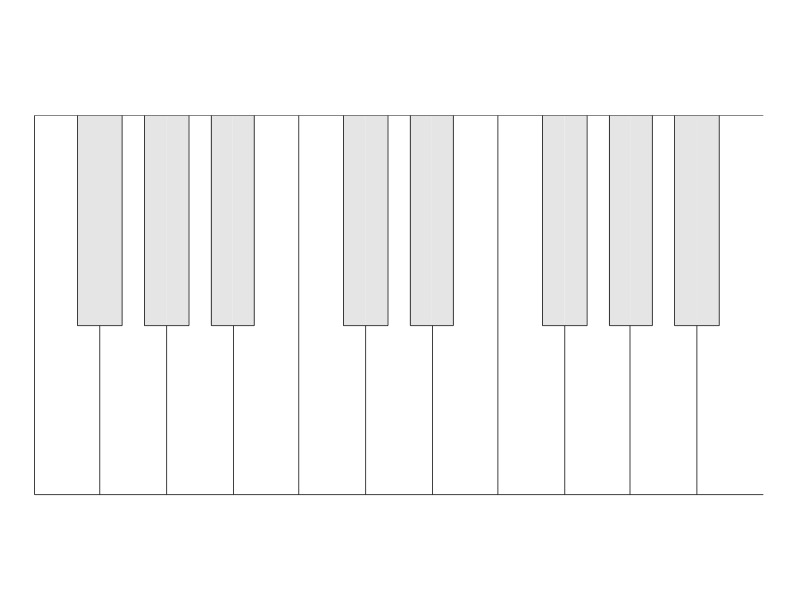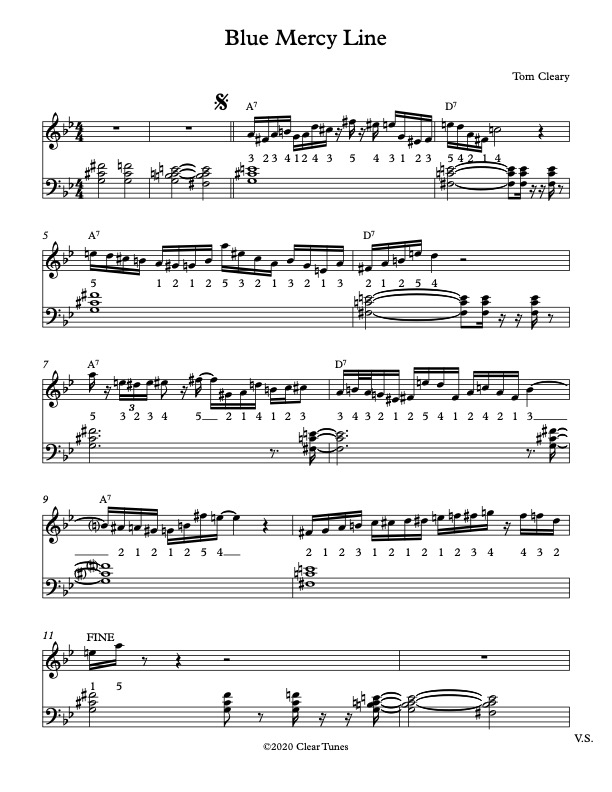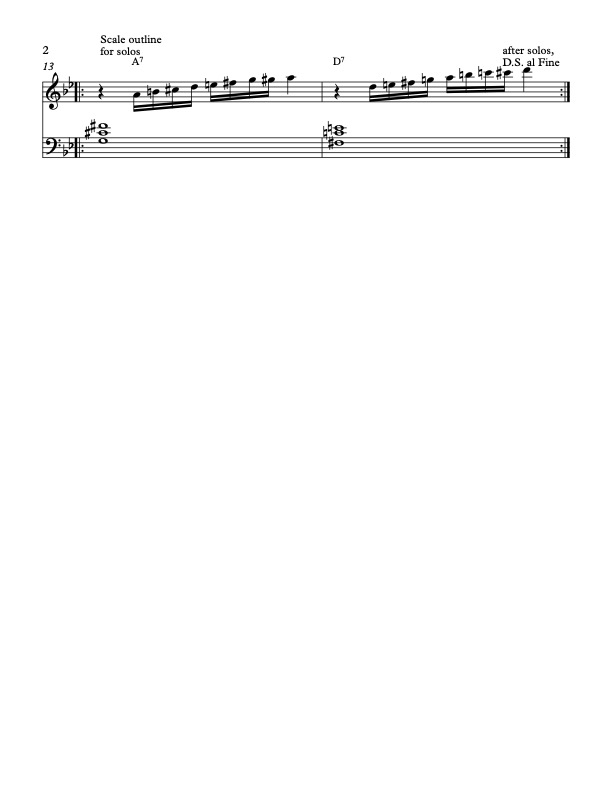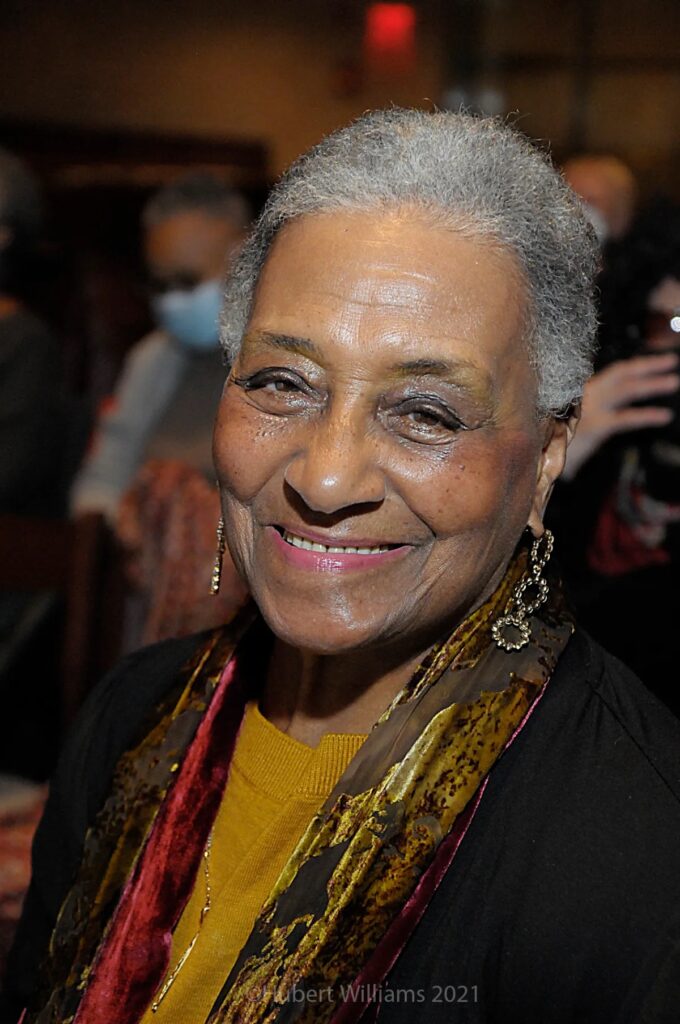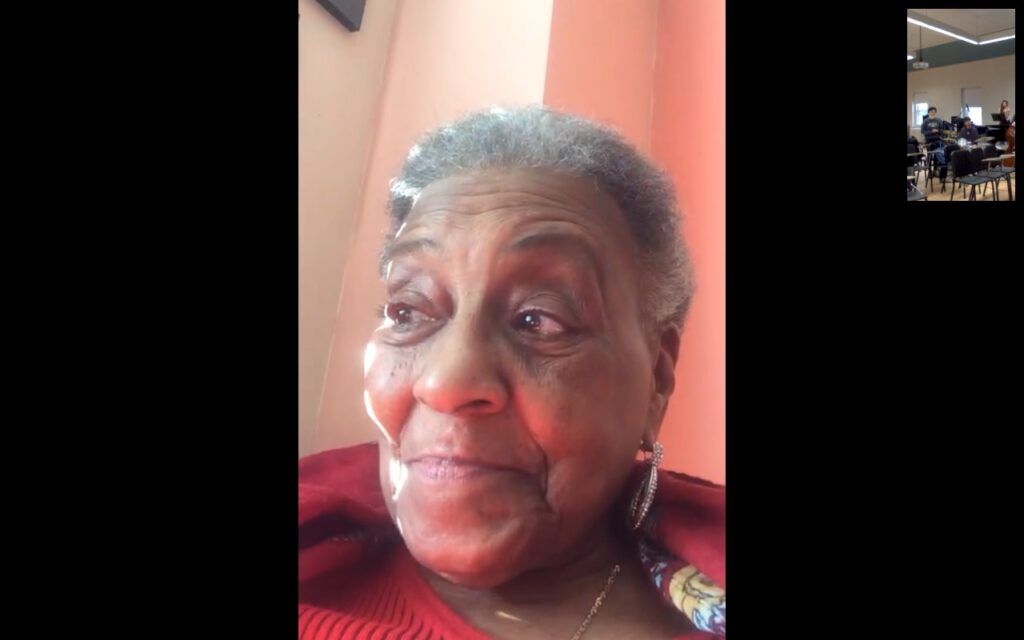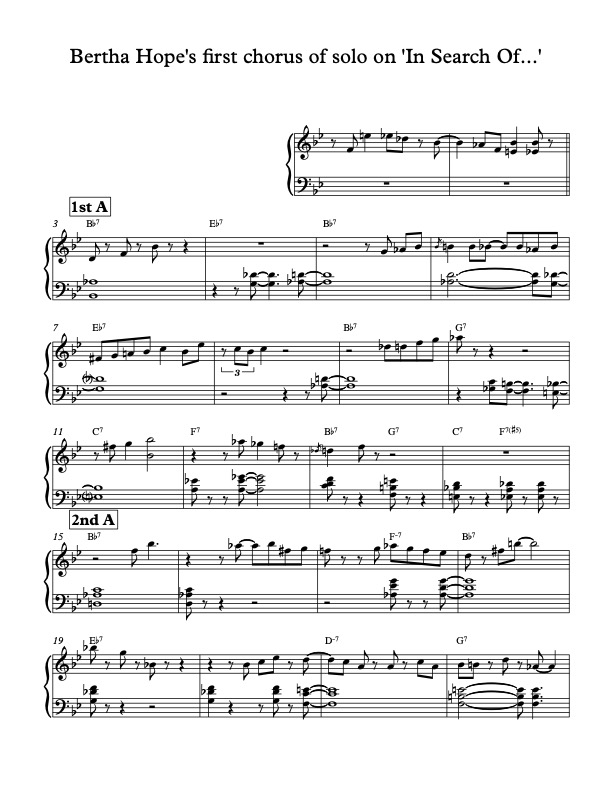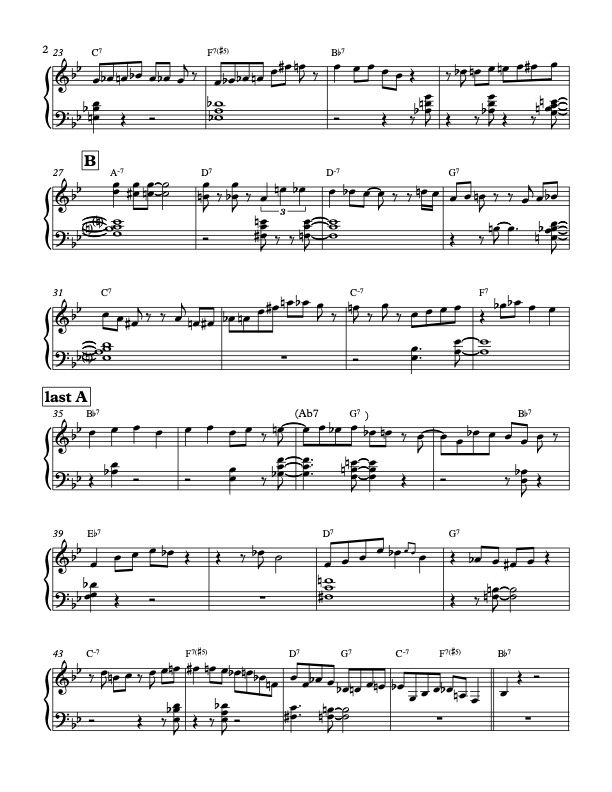Throughout his career as a composer, Thelonious Monk composed a number of tunes that use the twelve-bar blues progression. Among these are tunes based on one-bar motives or ‘riffs’ which Monk transposes and alters in various ways, which might be called ‘one bar blues’. While a number of Monk’s better known blues tunes, such as ‘Straight No Chaser’, use more complex ways of developing a short motive, the blues tunes I discuss below are good models for building an effective melody based on the ‘jazz blues’ progression that ‘makes the changes’ (clearly implies the chord progression through a single-note melodic line) using simpler ways of developing a one-bar ‘riff’ or motive.
As far as I know, the riffs in the tunes I describe are original to Monk, so I would say they use the second and third steps in the ‘Emulate, Assimilate, Innovate’ process. This is a series of steps which master trumpeter and composer Clark Terry used to describe how improvisers develop their skills. In my series of blog posts using that title, I described how it can be seen in the work of various composers and improvisers, starting with a post on how Haydn and Mozart may have borrowed from each other, and how Ella Fitzgerald and Miles Davis borrowed from various pop tunes. At the end of this post, you’ll find an original tune of mine, ‘Barbara’s New Digs‘, where I’ve tried to use Monk’s approaches to the ‘assimilate’ and ‘innovate’ steps, as well as include the ’emulate’ step (by borrowing riffs from two different sources.) Please click on the title in the last sentence to hear an audio recording of the tune.
Five Spot Blues, from the 1963 album Monk’s Dream, is based on a six-note riff which outlines a dominant seventh chord in third inversion (in his essential text Jazz Keyboard Harmony, Phil Degreg describes this as a dominant 7th ‘voiced off the seventh’). (The link in the previous sentence should take you to a recording of the tune. While it is possible to learn the tune by ear and I encourage you to try that first, a chart can be downloaded from musicnotes.com and one can also be found in the highly recommended Thelonious Monk Fakebook.) Following the blues progression as shown in step 1 of the assignment below, Monk introduces the riff in the first measure, and then transposes (or ‘assimilates’) it to the Eb7 chord by transposing it up a perfect fourth. In measures 3-8 he continues outlining the blues progression using the Bb and Eb versions of the riff. In measure 9, Monk ‘innovates’ on the riff by changing just the last note of the original pattern to the root of the F chord. A different kind of innovation can be heard in m. 10, where Monk moves the riff to a different rhythmic location (beat 3 instead of beat 1). This is one of Monk’s favorite ways of altering a riff; ‘Straight, No Chaser’ is a masterclass in this technique. Five Spot Blues is a more stripped down version of the earlier Blues Five Spot from the album Misterioso, which includes a nonstandard bVII chord in m. 6 of the progression.
North of the Sunset from the album Solo Monk (1965) is also based on a six-note riff, but here Monk uses more sophisticated methods of motivic development than he does in Five Spot Blues. (Here is a link to a reasonably priced chart for North of the Sunset on musicnotes.com.) While there is only one place in ‘Five Spot’ where Monk changes a note of the original riff, Monk uses this technique multiple times in ‘North’, at m. 2, 3, 5, 6, 7, 9 and 10. In ‘North’, Monk also uses the more sophisticated techniques of extending the initial one-bar motive to a two-bar motive (m. 3-4 and 7-8 – this also occurs at m. 5-6 of ‘Blue Monk’ ), and using the melodic rhythm of the motive with a different melodic shape (at m. 11-12, in a phrase that recalls the opening of ‘Straight, No Chaser’.) With a running time of just under two minutes, Monk’s recording of ‘North of the Sunset’ is also a short tour de force of jazz piano left hand accompaniment techniques, beginning with two note shell voicings during the head, progressing on to a stride left hand during the solo, and including a short stretch of walking bass.
Below are some guidelines on how to compose a twelve-bar melody based on the ‘jazz blues’ progression, using first the ‘assimilate’ process from ‘Five Spot Blues’ and then (if you choose) the ‘assimilate/innovate’ process from ‘North of the Sunset’.
1) Choose a key for your melody. I suggest using one of the more common keys for blues among jazz players and singers: G, C, F or B flat. Write out the chord progression of a basic I-IV-V blues in your chosen key on a piece of staff paper, following the progression as shown below (each roman numeral represents the dominant seventh chord beginning on the step of your key’s tonic major scale indicated by the numeral) :
I / / / | IV / / / | I / / / | / / / / |
IV / / / | / / / / | I / / / | / / / / |
V / / / | / / / / | I / / / | V / / / |
2) Compose or adapt a one-measure melodic phrase which outlines a dominant 7th chord, either through arpeggiation (i.e. moving through chord tones in any order, often involving intervallic or ‘skip’ motion) , as in ‘Five Spot Blues’, or through a combination of arpeggiation and stepwise melodic motion (i.e. moving along the mixolydian scale in scale steps), as in ‘North Of The Sunset’. By ‘adapt’, I mean that if you borrow a short melodic phrase from a source such as an improvised solo, alter something about it to make its source less identifiable. An example of this is Oscar Pettiford’s ‘Swingin’ ‘Til The Girls Come Home’. My theory about the tune is that Pettiford borrowed the first four notes of the second strain in the Toreador Song from Georges Bizet’s opera Carmen. Pettiford adapted the phrase by using only the first four notes (using less than half of the tune’s signature ten-note opening phrase), syncopated the first note by starting it a half beat earlier, and changed the tune’s dotted-eighth-sixteenth rhythm to swing eighth notes. (Although ‘Swingin’ was first recorded in 1951, the ubiquity of The Toreador Song in the jazz melodic language can be heard in a couple of later solos by a number of Pettiford’s contemporaries: Kenny Dorham in his 1955 solo on Lady Bird from The Jazz Messengers At The Cafe Bohemia Vol. 1 and Yusef Lateef in his 1958 flute solo on Take the ‘A’ Train from The Sounds of Yusef.)
Keep in mind that in order to outline a dominant 7th chord, a phrase should end on a chord tone. In a jazz context, all notes of the seventh/mixolydian scale other than the 4th are considered chord tones. (When a phrase over a dominant 7th chord ends on the 4th, the unresolved sound of the 4th says ‘move me somewhere’. Resolving the 4th down to the 3rd or up to the 5th by step is one of the easiest ways to avoid the unfinished sound created by ending on the 4th in a phrase over a dominant 7th chord.)
Sources from which you could borrow a one-bar phrase outlining a dominant 7th include the Glossary of Melodic Patterns Based On Root Position Chords in my blog post on the tune ‘Broken Heart for Sale’, and the licks in my exercise Jody, Donna, Four Brothers and Koko, which imply rootless voicings of dominant seventh chords. If you borrow a melodic phrase, feel free to adapt it (or ‘innovate’ on it) before incorporating it into your tune by altering it rhythmically as in the Pettiford tune described above, or using any of the ‘innovate’ approaches described in step 4 below.
3) Using ‘Five Spot Blues’ as a model, compose a ‘transpose/assimilate’ draft of your blues by transposing your phrase to the to the mixolydian/seventh scales built on the roots of the I, IV and V chords in blues progression shown in Step 1. We will take the ‘transposition only’ approach that Monk uses in m. 1-8 of ‘Five Spot’ and extend it into the last four measures as well, to keep this part of the process more straightforward.
As in ‘Five Spot Blues’, In the measures where the chord from the previous measure is repeated (m. 4, 6, 8 and 10), leave a measure of rest in the melody. (Note that the slightly different ‘Blues Five Spot’, there are melody notes in m. 6, but we will take the simpler approach of ‘Five Spot Blues’ and let the Eb7 chord continue in that measure.) Also, leave a measure of rest in m. 12. This follows a common practice in blues melodies and improvised solos by great jazz players of leaving space in the last one or two measures of a chord progression.
The chord pattern in #1 above shows the V chord in m. 9-10, and we’ll follow Monk’s example by following that pattern in the melody. However, we will also follow Monk’s example by having chord players, or pianists’ left hands, play the ii chord in m. 9, so the chord progression in the last four bars will be as follows:
ii / / / | V / / / | I / / / | / / / /
The ii chord in m. 9 is one of the key element that makes a ‘jazz blues’ different from how the blues progression is played in other contexts, such as traditional blues by performers and composers such as Muddy Waters and Willie Dixon.
4) Create a ‘assimilate/innovate’ draft of your blues melody by adding innovations to the melody some of the measures where you repeated or transposed the basic motive exactly in your ’emulate/assimilate’ drafts. Try using some of the innovations Monk makes during the ‘head in’ to ‘North of the Sunset’ on the basic motive heard in the first measure. These include
– ending the motive on a different chord tone (as in m. 2, 5, 6, 9 and 10 of the ‘head in’ to North of the Sunset)
– on chord changes that last two measures in the basic progression shown at the beginning of #3, extending the one-bar motive to a two-bar motive by adding a melodic ‘tail’ (as in m. 3-4 and 7-8 of the ‘head in’ to ‘North Of The Sunset’)
– using the melodic rhythm of the basic motive, but with a different notes, and extending the motive by adding a ‘tail’ (as in m. 11-12 of the ‘head in’ and ‘head out’ to ‘North’)
– moving the motive to a different beat of the measure, as in the last measure of ‘Five Spot Blues’
– transposing some of the notes in the phrase up or down an octave, either for variety or to keep the melody in a playable/singable range (as in Swingin’ Till The Girls Come Home).
In my tune ‘Barbara’s New Digs’, after a short bass intro, the first chorus of the head in uses the ‘transpose/assimilate’ process, and the second chorus adds the ‘innovate’ step. I also add the ’emulate’ step by borrowing the opening riff from Camille Thurman’s solo on ‘Sassy’s Blues’ (shown in my blog post on that solo) and extending that motive by adding my own rhythmically compressed version of a melodic phrase from ‘Malanga Amarilla’ by Israel Cachao Lopez (which can be found in my Glossary of Melodic Root Position Chord Patterns). Just above the chart for the tune, you’ll find a simple scale outline of the B flat ‘jazz blues’ progression the tune uses. Here is a link to a short recording I made of Barbara’s New Digs. I hope you enjoy it!
